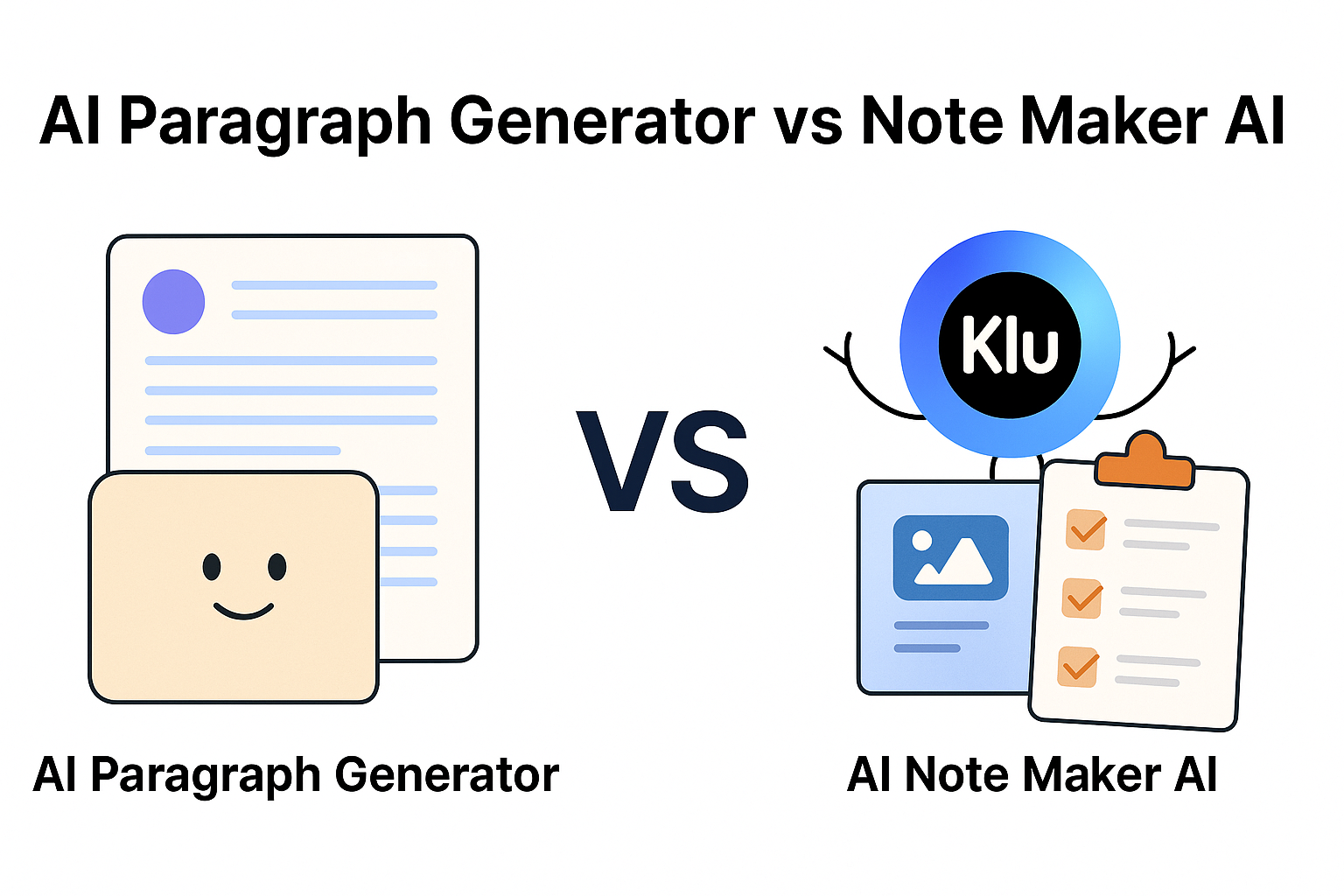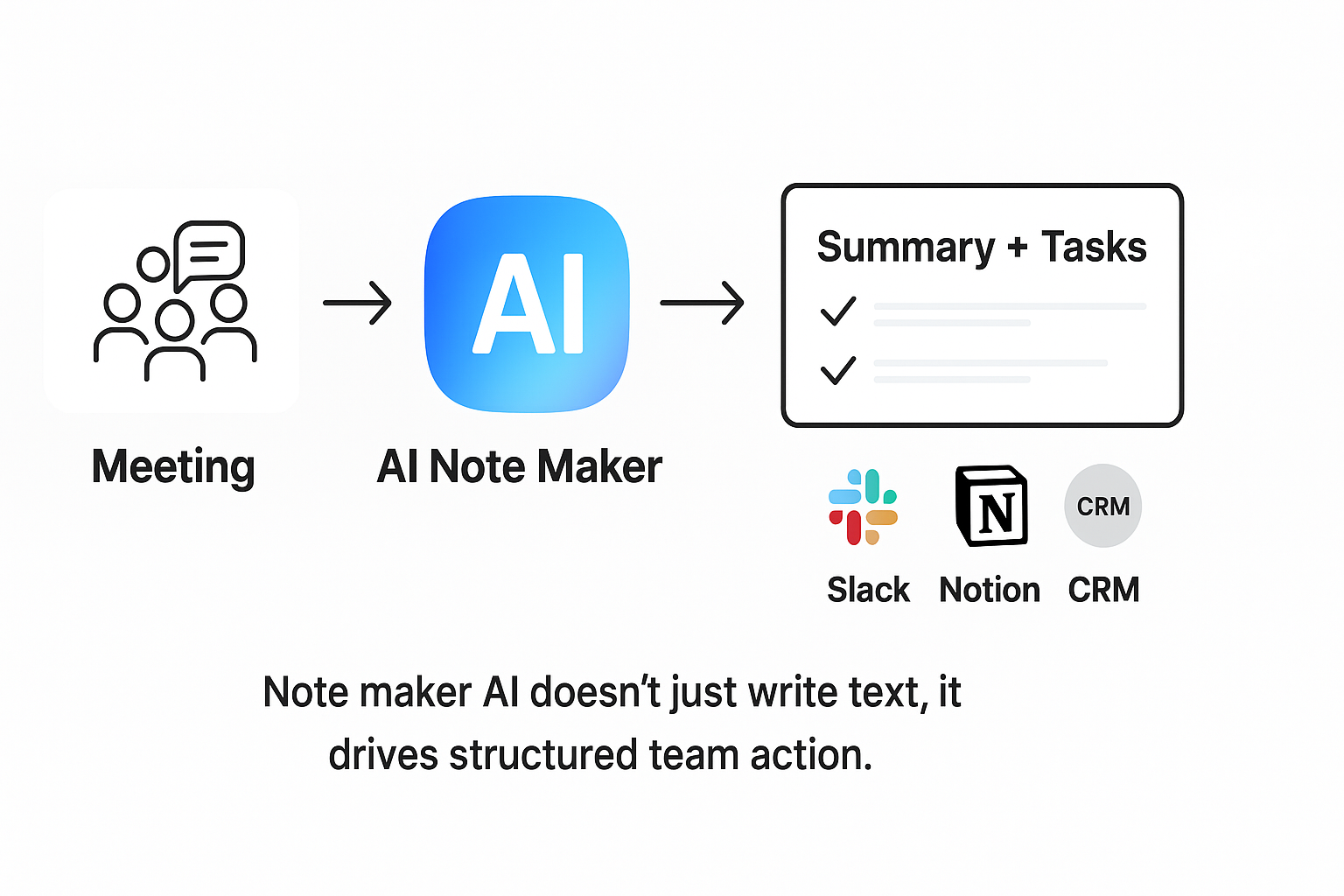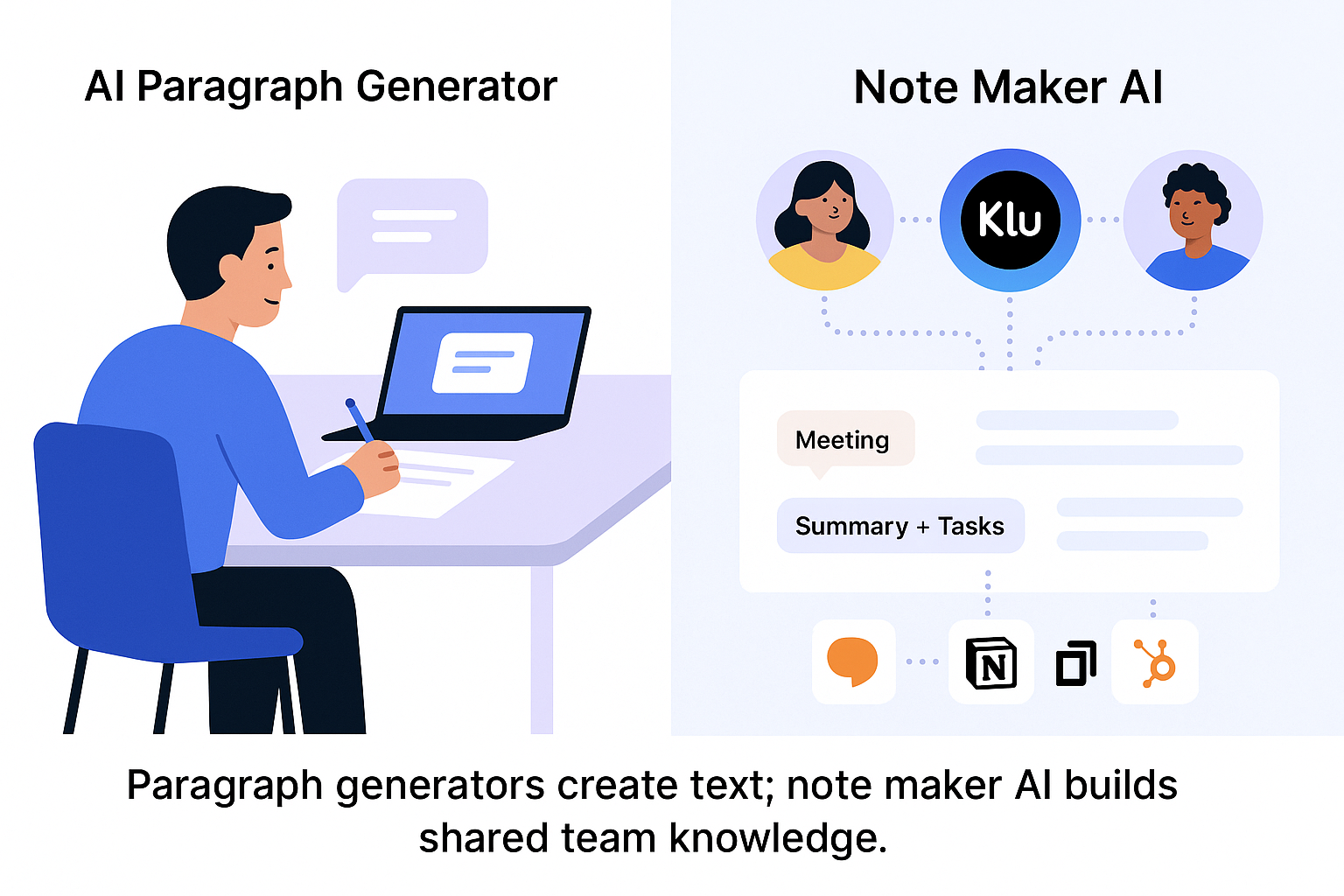 Sami AZ
Sami AZ
Teams in 2025 rely on AI more than ever, from writing reports to generating meeting summaries and automating daily workflows. Yet not all AI tools serve the same purpose.
There’s a growing divide between AI paragraph generators, which create text on demand, and note maker AI systems, which structure real conversations and workflows.
While both technologies use similar models, their goals are fundamentally different. AI paragraph generators help create words; note maker AI helps capture, structure, and activate them.
In this article, we’ll explore how both work, what they’re good at, their limitations, and why teams focused on collaboration, accountability, and meeting productivity are leaning toward note maker AI.
An AI paragraph generator is designed to create written content based on a short prompt. These tools are used for marketing copy, blog posts, essays, or short-form text completion.
Popular examples include ChatGPT, Jasper, Copy.ai, and Writesonic, each capable of turning prompts into readable paragraphs instantly.
These systems are excellent for speed, but they lack context, personalization, and awareness of your team’s specific projects or meetings.
AI paragraph generators don’t understand your workflow.
They create text, not knowledge. Once generated, that text isn’t connected to your projects, meetings, or decisions, meaning the information often dies in isolation.
A note maker AI (like Klu) is designed not to write marketing copy but to structure real human conversations.
It records, transcribes, and summarizes meetings, then transforms them into tasks, follow-ups, and searchable knowledge, bridging the gap between communication and action.
Let’s break down what separates these two AI types in terms of purpose, data, and impact.
Paragraph generators depend on typed prompts. Note maker AI listens to real conversations, extracting meaning from context, tone, and discussion structure.
Paragraph AI outputs text. Note maker AI outputs actions: summaries, follow-ups, and next steps that live inside your existing tools.
Paragraph generators are built for solo users, writers, marketers, students.
Note maker AI is designed for teams, managers, sales reps, project leads, who need to stay aligned and act on meeting outcomes.
A paragraph generator’s text becomes outdated quickly.
A note maker AI continuously updates your shared knowledge base, keeping decisions searchable and traceable.
AI writing tools don’t retain your company’s history.
Note maker AI builds a knowledge layer, connecting past meetings to current work.
In 2025, the top-performing teams aren’t using AI just to write faster, they’re using it to work smarter.
Tools like Klu, Fireflies, and Fathom have shown how automated note systems create collective awareness that no writing assistant can match.
According to 2025 Gartner insights, teams waste an average of 4.5 hours per week rewriting or reformatting meeting notes manually. Meeting automation cuts that by more than 70%.
With AI note systems, every decision becomes searchable, and every task flows instantly into your workflow.
Writing assistants help generate text, but note makers help build accountability.
Team leaders use these AI systems to ensure action items don’t disappear between tools, improving follow-through and shared visibility.
AI note systems offer traceability, a key advantage for teams in sales, operations, and regulated industries. You can verify what was promised, when, and by whom.

A paragraph generator helps marketing writers brainstorm campaign ideas.
But once the campaign kickoff happens, a note maker AI ensures that meeting notes, creative feedback, and action items flow directly into Asana or Notion.
Paragraph generators help write email templates or proposals.
Note maker AI, however, captures real sales calls, summarizes objections, and syncs notes into CRMs like HubSpot or Pipedrive for follow-up.
Paragraph generators might assist in writing specs.
Note maker AI tracks feature discussions, captures requirements, and auto-generates backlog items, keeping everyone aligned.
Paragraph generators can draft playbooks.
Note maker AI ensures each client’s meetings are documented and searchable, so customer success managers never miss a follow-up.

In short, paragraph generators fuel creativity; note makers fuel accountability.
Where paragraph generators end with words, note maker AI begins with impact.
Q1: Can I use both AI paragraph generators and note maker AI together?
Yes. Many teams use generators for writing and note maker AI for capturing work intelligence. The two complement each other well.
Q2: Are note maker AIs harder to use?
No. Tools like Klu integrate with your existing meeting calendar and automate most of the process.
Q3: Is my data safe with note maker AI tools?
Yes. Reputable note maker tools are SOC 2 and GDPR compliant and allow you to control data sharing and access.
Q4: Do note maker AIs work with all meeting platforms?
Yes. Most support Zoom, Google Meet, Microsoft Teams, and even browser-based platforms.
Q5: Can AI note makers learn our company’s workflow?
Over time, yes. They adapt by recognizing recurring patterns, meeting types, and tasks.
The difference between AI paragraph generators and note maker AI reflects the evolution of workplace AI.
One writes, the other connects.
One creates text, the other creates impact.
For teams, that distinction is everything.
If your goal is collaboration, automation, and visibility, note maker AI like Klu will always outperform text generation tools.
Your meetings should not just produce words, they should produce progress.
That’s the power of structured AI for modern teams.
Ready to move beyond transcription? Try Klu Free.